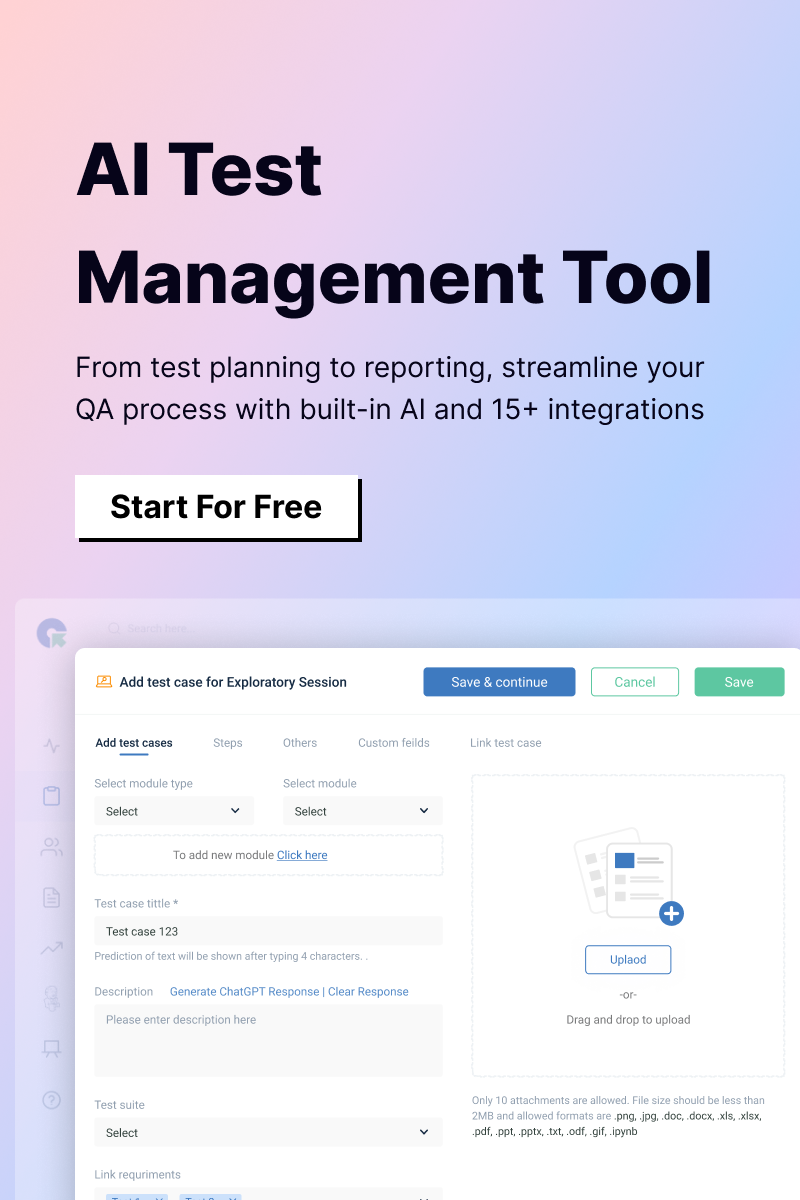In today’s competitive market, a successful product isn’t just about innovative ideas or clever design; it’s about delivering a seamless and satisfying user experience. That’s where Quality Assurance (QA) takes center stage. QA plays a pivotal role in a product’s journey, ensuring it functions flawlessly, aligns with customer expectations, and ultimately thrives in the marketplace. We will introduce the five essential QA skills that contribute to this success.

Skill 1 – Analytical Thinking and Problem-Solving
Analytical thinking and problem-solving are crucial skills for Quality Assurance (QA) professionals. These skills enable testers to identify issues, analyze root causes, and ensure the overall quality of the product. By applying analytical thinking, QA teams can anticipate potential problems before they impact users, leading to a more stable and reliable software experience.
Breaking Down Complex Requirements
One of the key responsibilities of a QA professional is to dissect complex requirements into manageable test scenarios. Software applications often have intricate functionalities that must be thoroughly tested to meet user expectations. By breaking down requirements into smaller, testable units, testers can ensure complete coverage and avoid missing critical aspects of functionality. This approach also helps in designing structured test cases that align with business needs, reducing ambiguity in the testing process.
Identifying Patterns and Edge Cases
Analytical thinking plays a significant role in identifying patterns within defects and recognizing edge cases that might otherwise go unnoticed. Patterns in defect occurrence can indicate underlying issues within the application, such as recurring bugs linked to specific modules or functionalities. By recognizing these trends, QA testers can proactively address problem areas and prevent similar defects in the future. Additionally, identifying edge cases ensures that the software functions correctly even in unexpected or extreme scenarios, improving overall robustness and reliability.
Resolving Bugs Proactively
Effective problem-solving is essential for resolving bugs efficiently and minimizing their impact on the development lifecycle. QA teams must collaborate closely with developers to address issues as early as possible, reducing costly rework and preventing defects from reaching production. By analyzing root causes and proposing actionable solutions, testers contribute to a smoother development process and a higher-quality end product. Proactive bug resolution also fosters a culture of continuous improvement, where teams learn from past issues to enhance future software development practices.
Skill 2 – Strong Communication and Collaboration
Strong communication and collaboration skills are essential for QA professionals, especially in cross-functional teams where coordination between different stakeholders is crucial. Effective communication ensures that quality expectations are clearly defined and that teams work together to achieve a common goal.
Collaborating with Developers and Product Owners
QA professionals must work closely with developers, product owners, and other stakeholders to ensure alignment on project goals and quality expectations. By maintaining open communication, QA can help teams understand potential risks, clarify requirements, and streamline the testing process. Collaborative efforts between QA and development teams lead to faster issue resolution and a more efficient software development lifecycle.
Writing Clear and Concise Bug Reports
A key aspect of communication in QA is the ability to write clear and concise bug reports. A well-written bug report provides developers with the necessary information to reproduce and fix issues efficiently. Important elements of an effective bug report include a detailed description of the issue, steps to reproduce, expected versus actual results, and relevant screenshots or logs. Clear bug reports minimize misunderstandings and accelerate the debugging process, ultimately contributing to a more stable product.
Bridging the Gap Between Teams
QA professionals serve as the bridge between various teams, including development, product management, and UX/UI. By facilitating discussions and ensuring that quality remains a shared responsibility, QA helps align teams on delivering a high-quality product. Effective communication between these teams leads to better decision-making, improved user experiences, and a streamlined development workflow.
Skill 3 – Attention to Detail
Attention to detail is a vital skill for QA professionals, as even the smallest oversight can impact product quality and user experience. A keen eye for detail helps testers catch minor issues before they escalate into major problems, ensuring a polished and refined product.
Spotting Minor Issues That Can Escalate
Small defects such as typos, misalignments, or subtle bugs may seem insignificant at first but can lead to a negative user perception. By meticulously reviewing every aspect of the product, QA professionals help prevent these minor issues from growing into major problems. This attention to detail ensures a high-quality user experience and maintains the product’s credibility.
Ensuring Consistency Across the Product
Consistency is key to delivering a seamless user experience across different platforms, devices, and operating systems. QA testers play a crucial role in verifying that all features, UI elements, and functionalities remain uniform across varying environments. This ensures that users receive the same high-quality experience regardless of how they access the product.
Catching Usability Issues Early
Beyond functionality, usability is a critical aspect of product quality. QA professionals with strong attention to detail can identify usability issues that might not be immediately apparent but could affect customer satisfaction in the long run. By catching these issues early, they help refine the product’s design and improve its overall user experience.
Skill 4 – Test Automation Proficiency
Test automation is an essential skill for QA professionals, enabling them to accelerate the testing process and increase overall efficiency. Automated testing helps teams execute repetitive tasks, integrate testing into development workflows, and improve software quality.
Designing and Maintaining Automated Test Suites
Automating test cases can significantly improve efficiency in testing cycles, but it’s important to automate smartly. Not all tests should be automated, QA professionals need to determine which scenarios benefit from automation and which require manual testing.
Key areas to automate include:
- Repetitive and time-consuming regression tests
- Critical functionality that must be tested frequently
- Performance and load testing that require large datasets
However, exploratory testing, complex user interactions, and one-time validations are better suited for manual testing. Striking the right balance ensures that automation enhances productivity without compromising test effectiveness.
Ensuring Continuous Integration and Delivery
Test automation plays a crucial role in Continuous Integration and Continuous Delivery (CI/CD) pipelines. Automated tests help validate code changes quickly and provide immediate feedback to developers, ensuring that new features and updates do not introduce regressions. By integrating test automation into CI/CD workflows, teams can release high-quality software faster and more consistently.
Balancing Manual and Automated Testing
While automation improves efficiency, it is essential to balance automated and manual testing. Automated tests are ideal for regression and performance testing, but manual testing remains vital for exploratory testing, usability assessment, and complex test scenarios. QA professionals must determine the right mix of manual and automated testing to maximize test coverage and ensure a well-rounded testing strategy.
Skill 5 – Understanding the User’s Perspective
Understanding the end user’s perspective is crucial for QA professionals to ensure that the product meets customer needs and delivers a positive experience.
Empathy for the End User
QA professionals must step into the user’s shoes to evaluate whether the product is intuitive, user-friendly, and aligns with real-world expectations. By considering the user’s journey, testers can identify pain points and suggest improvements that enhance overall usability.
Testing for Real-World Scenarios
Creating test scenarios that mimic real-world user behavior is essential for identifying issues that could arise in practical usage. This includes testing across different devices, network conditions, and user interactions to ensure robustness under varying circumstances.
Validating Customer Requirements
Ensuring that the product meets all customer requirements is a key QA responsibility. By validating business needs and addressing pain points, testers help deliver a product that aligns with user expectations and enhances customer satisfaction.
How These QA Skills Drive Product Success and Sales
QA skills not only improve product quality but also directly impact business success by enhancing the user experience, reducing time-to-market, and strengthening brand reputation.
Ensuring a Flawless User Experience
QA’s attention to detail and user-focused testing contribute to a smoother, more enjoyable user experience. By identifying and resolving issues before release, QA teams help build customer trust and loyalty. A well-tested product minimizes user frustration and maximizes engagement, leading to increased customer retention and satisfaction.
Reducing Time-to-Market
Test automation and efficient collaboration between teams play a crucial role in accelerating development cycles. Automated testing speeds up regression testing, allowing teams to focus on new feature development. By detecting defects early, QA reduces delays and ensures that the product reaches the market faster without compromising quality.
Enhancing Product Reputation and Marketability
A thoroughly tested, reliable product strengthens a brand’s reputation and increases its marketability. Customers are more likely to recommend a high-quality product, leading to positive word-of-mouth and organic growth. Additionally, businesses can confidently promote their product’s reliability, making it easier to attract and retain new customers.
Final Thoughts
By integrating these QA skills into the development process, companies can drive product success, improve customer satisfaction, and increase sales in a competitive market. At QA Touch, we have a team of Software Testers who are curious, detail-oriented, enthusiastic, and empathetic to users. Reach out to us for integrated solutions for test management and execution.










